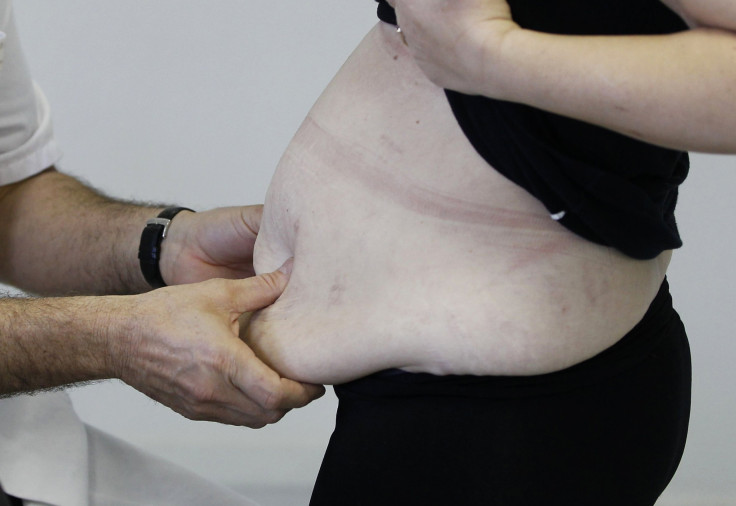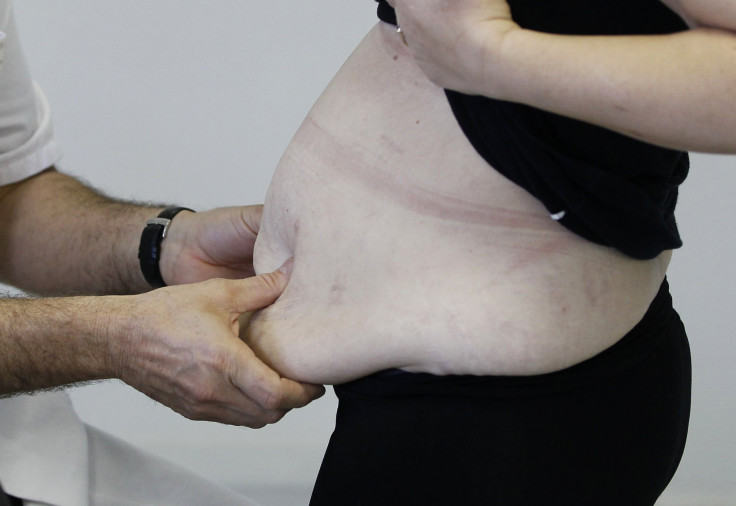Impaired Brown Fat May Cause Obesity, But There's A Way To Fix It

Brown adipose tissue, also known as brown fat, has been the focus of a lot of studies that are looking to solve the world’s obesity problem. Research presented at Friday’s International Liver Congress in Barcelona showed that people struggling with obesity can manage their weight and improve glucose tolerance by stimulating brown fat’s energy consumption.
The bodies of humans and other mammals are home to two types of fat: brown fat and white fat. Brown fat’s most important function is to generate body heat by burning white fat. Understanding brown fat’s role in the human metabolism and what causes it to burn calories could lead to an effective method for weight loss.
To learn more, Laurence Poekes, lead author from Université Catholique de Louvain in Belgium, and colleagues studied male foz/foz mice, a type of lab mouse that is prone to developing metabolic syndrome. They compared these mice to a wild species that is not predisposed to obesity, high blood pressure, and diabetes. The researchers found that a high-fat diet led to impaired heat production by brown fat, lower energy expenditure, and increased fat storage.
The researchers then stimulated brown fat activity in overweight foz/foz mice by exposing them to a temperature of 4°C for two hours a day, five times a week. They also gave the mice a treatment that increases energy expenditure and activates brown fat, and they transplanted brown fat to them from the wild species of mice. Foz/foz mice that had their brown fat stimulated saw a decrease in weight gain and improvements in glucose tolerance.
“The results of our study show that certain cellular impairments found in one's metabolic make-up increases the likelihood of obesity and the associated issues, such as diabetes and high blood pressure," said Poekes in a statement. "By intervening to reverse such impairments using a mouse model, we believe effective therapeutic strategies could be developed to combat obesity and associated comorbidities."
Further research could adapt the technique to human patients. "This study uncovers a smart approach that could help the medical community develop effective interventions to address our global population's obesity epidemic," said Professor Tom Hemming Karlssen, vice secretary of the European Association for the Study of the Liver. "I look forward to seeing this approach further investigated in future research."

Earlier research, presented at the 2014 joint meeting of the International Society of Endocrinology and the Endocrine Society in Chicago, also showed that cool temperatures promote the growth of brown fat, while warmer temperatures reduce the amount of brown fat in the body. However, scientists are just starting to understand how this process plays into high cortisol levels — an indicator of stress. The younger a person is, the more likely they are to have higher levels of brown fat that help balance their blood sugar levels.
According to the World Health Organization (WHO), 13 percent of the global population, or more than 600 million people around the world, fit the criteria for obesity. Around 2.8 million people die each year as a result of being overweight or obese. The WHO has classified obesity as an epidemic and experts continue to scramble for answers that explain why so many people are overweight and how they can win the struggle to shed the extra pounds. Brown fat activation could provide one.
Source: Poekes L, et al. Brown adipose tissue stimulation as a new approach to fight obesity and metabolic syndrome. The International Liver Congress . 2016.
Published by Medicaldaily.com



























